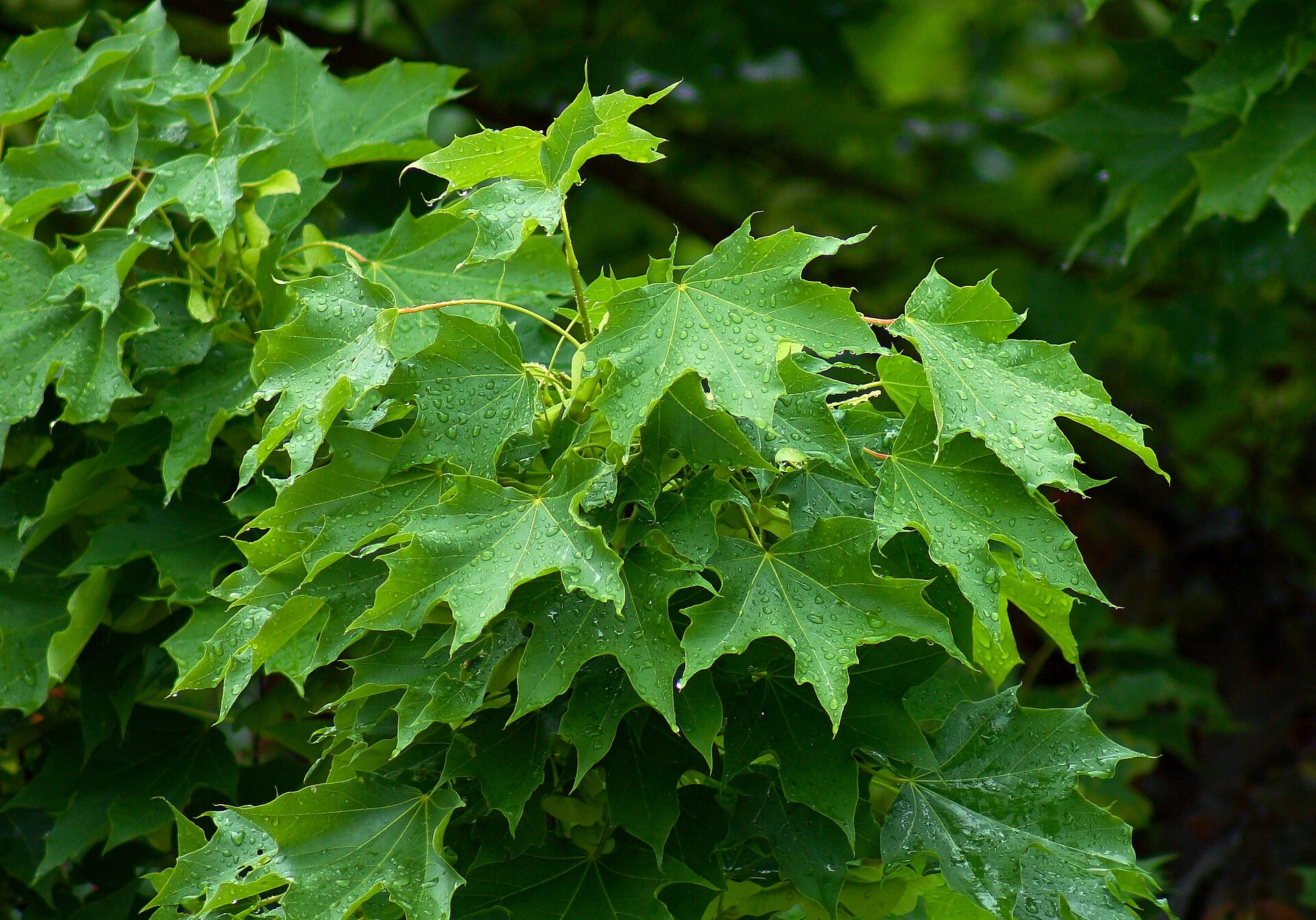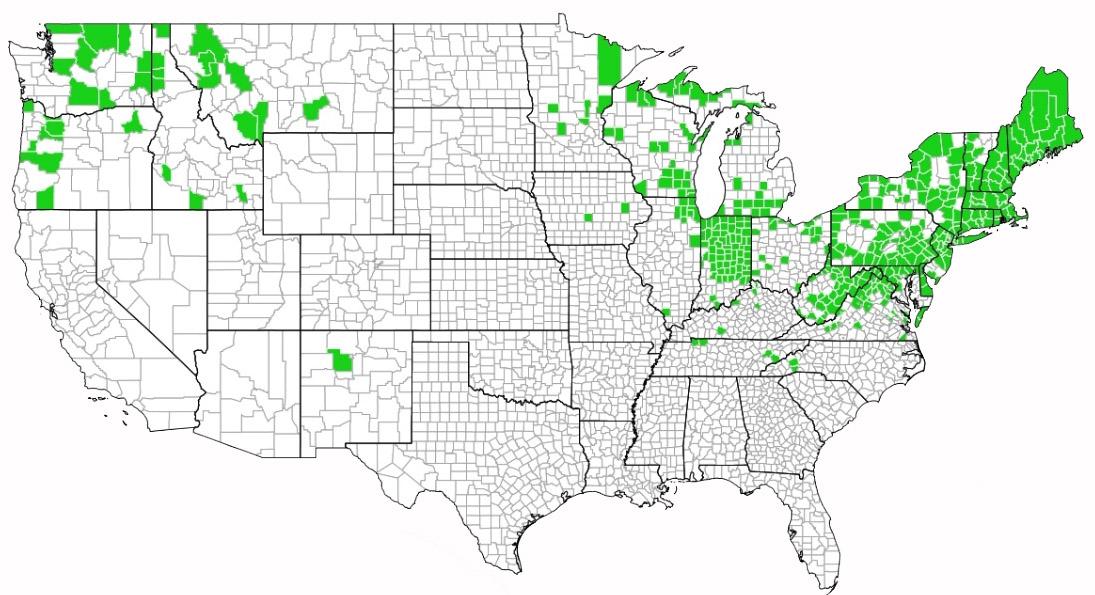Norway Maple
Acer platanoides L.
Description
Norway maple is a member of the cashew family (Sapindaceae). It is a tree that usually reaches 50 feet tall ¹, but may reach 100 feet 8. It is fast-growing and can live up to 200 years 9. It has opposite leaves that are three to six inches long and are palmately lobed with five lobes resembling sugar maple. However, it has several points between the lobes and exudes a milky sap from the broken petiole that distinguishes it from sugar maple ¹. The leaves turn yellow in the fall rather than the orange and red of sugar maple. It flowers are yellow-green and produce fruits that are double-winged samaras with oppositely spreading wings ¹, further distinguishing it from sugar maple .

Leaves of Norway maple. @ Martin Bobka, Wikipedia ³.

Fruits of Norway maple. Wikimedia Commons 4.
Distribution
Norway maple is an introduced species from Europe 2,10 . It is widely planted throughout North America ², especially in the Northeast US and Canada and the Pacific Northwest. It has naturalized in the Northeastern USA and Midwest and is considered to be an invasive species 10.

Distribution of Norway maple in USA 8.

European distribution of Norway maple. @By Giovanni Caudullo – Caudullo, G., Welk, E., San-Miguel-Ayanz, J., 2017, Wikipedia ³.
Wildlife Importance
Supports larvae of Imperial Moth ¹.
Economic Importance
Widely used in the horticultural trade for urban trees, it poses problems for sidewalks and walkways 9. There are numerous cultivars selected for variations in size, leaf color, and hardiness 10. The deep shade it casts causes inhibits growth of anything beneath the drip line of the canopy 1,2. The wood is used in furniture, flooring and musical instruments 6.
Threats
Norway maple has few threats. It is susceptible to verticillium wilt. It is considered an invasive species throughout its North American range 5,8. It is banned for sale in New Hampshire and Massachusetts and is considered invasive by Maryland.
Interesting Facts
- Norway maple was probably the wood to make Stradivari violins 5.
- Norway maple leafs out earlier in the spring and holds its leaves longer in the fall than most other deciduous trees 6.
- The Maryland champion Norway maple is in Carroll County and is 70 feet tall 7.
- Introduced to North American by John Bartram in 1756 8.
- Its common name, Norway maple, is ironic as it occurs only in a small part of Norway, but throughout much of the rest of Europe 10.
References
- North Carolina Extension: Acer platanoides
- Missouri Botanical Gardens: Acer platanoides
- Wikipedia: Acer platanoides
- Wikemedia Commons: Acer platanoides fruit
- University of Minnesota: Norway maple
- The mystic magic of th Norway maple tree–Acer plantaoindes
- Maryland Big Tree Program
- University of Maryland Extension–Invasives in your woodland: Norway maple
- Gardenia: Acer platanoides
- International Dendrology Society: Acer platanoides
Contributed by J. Hull
